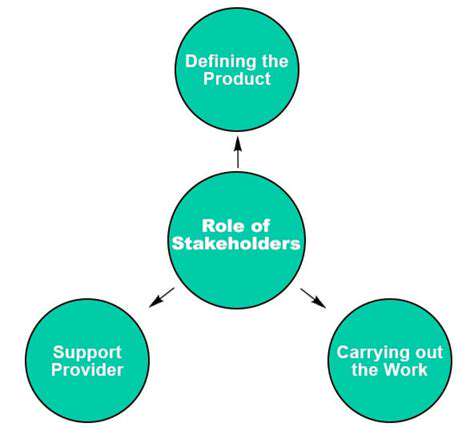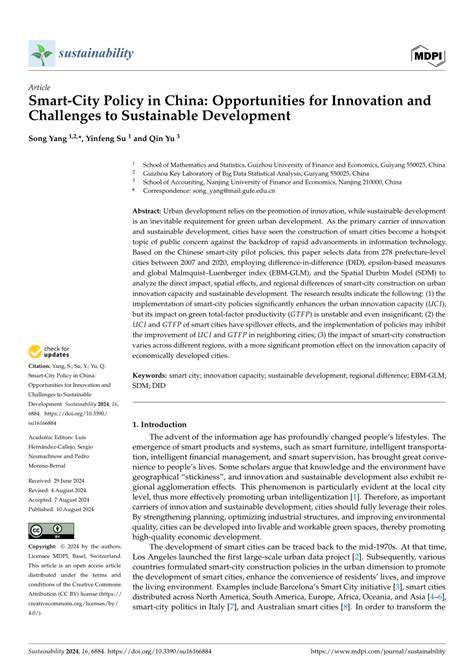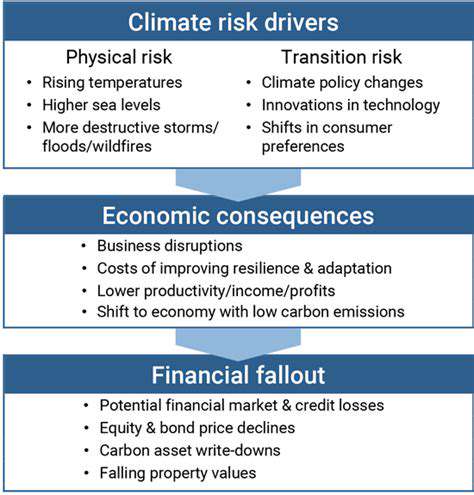Flood Risk Mitigation in Real Estate Planning
Identifying and Mapping Flood-Prone Areas
Understanding Flood Hazard Zones
Identifying flood-prone areas is crucial for effective flood risk mitigation in real estate planning. Understanding the various flood hazard zones delineated by governmental agencies, such as the Federal Emergency Management Agency (FEMA) in the United States, is paramount. These zones, often represented on flood maps, highlight areas with varying degrees of flood risk, from areas experiencing infrequent flooding to those susceptible to frequent or severe inundation. This knowledge allows for informed decisions regarding property acquisition, development, and construction, minimizing potential losses and ensuring the safety of residents.
Accurate mapping of these zones is essential. This involves considering historical flood data, topography, drainage patterns, and the potential impact of climate change. Analyzing past flood events, including their severity and frequency, helps to identify recurring patterns and potential vulnerabilities. Understanding the interplay between these factors allows for the creation of comprehensive flood risk assessments, providing a clearer picture of potential flood threats. This information is critical for developers and investors to make well-informed choices about land use, construction practices, and potential financial risks.
Implementing Mitigation Strategies within Flood-Prone Zones
Once flood-prone areas are identified, implementing appropriate mitigation strategies becomes critical. This involves a multifaceted approach that considers various aspects of land use and development. Strategies for flood risk mitigation can range from simple measures like elevating structures above potential flood levels to more complex solutions such as constructing floodwalls or levees. The selection of appropriate mitigation strategies should always consider the specific characteristics of the flood-prone area, including the frequency and severity of flooding, the type of soil, and the existing infrastructure.
Furthermore, promoting community awareness and education about flood risks is essential for effective flood risk mitigation. Providing residents with information about flood preparedness, evacuation plans, and the importance of adhering to building codes within flood-prone zones can dramatically reduce the impact of flooding on individuals and communities. Regular community meetings and workshops can help educate residents about the potential dangers and the available resources to protect themselves and their property.
Implementing strict building codes and regulations tailored to flood-prone areas is another vital component of effective mitigation. These codes should mandate the use of flood-resistant materials, appropriate grading for drainage, and proper design considerations to minimize the potential for damage during flooding events. Consistent enforcement of these codes is crucial in ensuring that new constructions are resilient and contribute to overall flood risk reduction. This approach ensures that new developments are designed with flood safety in mind, protecting both the environment and the people who live in or visit the affected areas.
Implementing Protective Design Strategies in New Construction
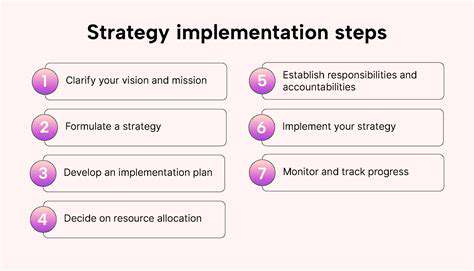
Implementing Robust Protective Design Strategies
Protective design strategies are crucial for ensuring the safety and reliability of products and systems across various industries. This involves proactively identifying potential hazards and vulnerabilities, and incorporating measures to mitigate risks. A well-designed protective system can prevent costly failures, injuries, and environmental damage. These strategies encompass a range of techniques, from simple safeguards to complex engineered solutions.
Careful consideration of potential failure modes is paramount in protective design. This involves analyzing the entire product lifecycle, from initial design to eventual decommissioning, to identify potential weaknesses and vulnerabilities. Understanding how these factors interact and how they can lead to failures is essential for implementing effective preventative measures.
Material Selection and Engineering
The choice of materials plays a significant role in a product's ability to withstand various stresses and impacts. Selecting appropriate materials with the necessary strength, durability, and resistance to environmental factors is vital. This includes considering factors like temperature ranges, chemical exposure, and potential impact forces.
Employing advanced engineering principles, such as stress analysis and finite element modeling, can further refine the material selection process. These methods allow for a more comprehensive understanding of material behavior under different loading conditions, leading to more robust and reliable designs.
Redundancy and Backup Systems
Implementing redundancy in critical systems is a powerful technique to enhance reliability and safety. This involves incorporating backup components or systems that can take over if the primary components fail. This ensures continuity of operation and prevents catastrophic consequences.
The level of redundancy required depends on the specific application and the potential consequences of failure. For mission-critical systems, a high degree of redundancy is often necessary to minimize downtime and maintain safety standards. This often involves careful cost-benefit analysis to determine the optimal level of redundancy.
Safety Testing and Validation
Thorough testing and validation are essential to verify the effectiveness of protective design strategies. This involves subjecting the product or system to various simulated and real-world conditions to assess its performance under stress and load. Such testing helps identify potential weaknesses and vulnerabilities that may not have been apparent during initial design phases.
Regularly updating and improving safety protocols and procedures is vital. This iterative approach ensures that the protective design remains effective in the face of evolving threats and challenges. Feedback from testing and real-world usage is crucial for continuous improvement and refinement of safety measures.
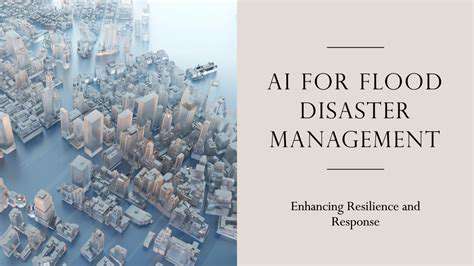
Financial Incentives and Risk Transfer Mechanisms
Financial Incentives for Flood Mitigation
Financial incentives play a crucial role in encouraging property owners and communities to adopt flood mitigation strategies. These incentives can range from tax breaks and subsidies for flood-proofing measures to grants and loans specifically designed for flood-resistant building materials. By making flood mitigation more affordable and accessible, financial incentives can incentivize a shift towards more resilient development patterns, ultimately reducing the overall risk of flood damage and the associated costs.
Furthermore, government programs offering subsidized insurance premiums for properties in flood-prone areas can make flood insurance more manageable for homeowners, encouraging them to proactively implement flood protection measures. This can include provisions for building elevation, improved drainage systems, and the installation of flood barriers.
Risk Transfer Mechanisms for Flood Insurance
Risk transfer mechanisms are essential tools for managing the financial burden of flood damage. These mechanisms essentially shift the risk of flood loss from individual property owners and communities to insurance companies or other entities. Flood insurance policies are a primary example of this, providing a financial safety net for individuals and businesses in the event of a flood.
Beyond traditional insurance, innovative risk transfer mechanisms are emerging, such as catastrophe bonds and flood-resistant infrastructure funds. These mechanisms pool resources to cover losses, distributing the risk across a broader spectrum of participants, thereby mitigating the impact on any single entity. Such models can increase the availability and affordability of flood insurance, even in high-risk areas.
Implementing Flood-Resistant Building Codes
Integrating robust building codes into the development process is a key component of flood risk mitigation. These codes should mandate the use of flood-resistant materials and construction techniques, ensuring that new buildings are designed to withstand the potential impact of floodwaters. This includes specifications for foundation design, wall construction, and roof systems, all of which need to be significantly stronger and more resistant to flood surges.
Furthermore, incorporating flood-resistant building codes can lead to a more resilient built environment. Such codes can significantly reduce structural damage from flooding, thereby minimizing disruptions to daily life and economic activities. This proactive approach to flood risk management is a vital investment in long-term community well-being.
Public-Private Partnerships for Flood Mitigation
Public-private partnerships (PPPs) can play a vital role in fostering comprehensive flood mitigation strategies. These partnerships leverage the expertise and resources of both the public sector, which often has extensive knowledge of flood risks, and the private sector, which can provide innovative solutions and capital investment. This collaboration can be particularly useful in areas where flood risk is high and financial resources are limited. PPPs can enable the development and implementation of large-scale flood mitigation projects, such as flood control infrastructure, flood-resistant land use planning, and comprehensive community education programs.
Effective PPPs require clear communication and shared goals. By defining roles and responsibilities, coordinating resources, and establishing clear accountability mechanisms, these partnerships can ensure that flood mitigation efforts are well-managed and achieve their intended outcomes. This collaborative approach can effectively drive the development of sustainable and resilient communities that are better prepared to cope with the increasing threat of flooding.
Read more about Flood Risk Mitigation in Real Estate Planning
Hot Recommendations
- AI in Property Marketing: Virtual Tours and VR
- Water Management Solutions for Sustainable Real Estate
- IoT Solutions for Smart Building Energy Management
- Sustainable Real Estate: Building a Greener Tomorrow
- Sustainable Real Estate: From Concept to Community
- AI Driven Due Diligence for Large Scale Developments
- Real Estate Sector and Global Climate Agreements
- Smart Buildings: The Key to Smarter Property Management
- Zero Waste Buildings: A Sustainable Real Estate Goal
- Understanding Climate Risk in Real Estate Financing
